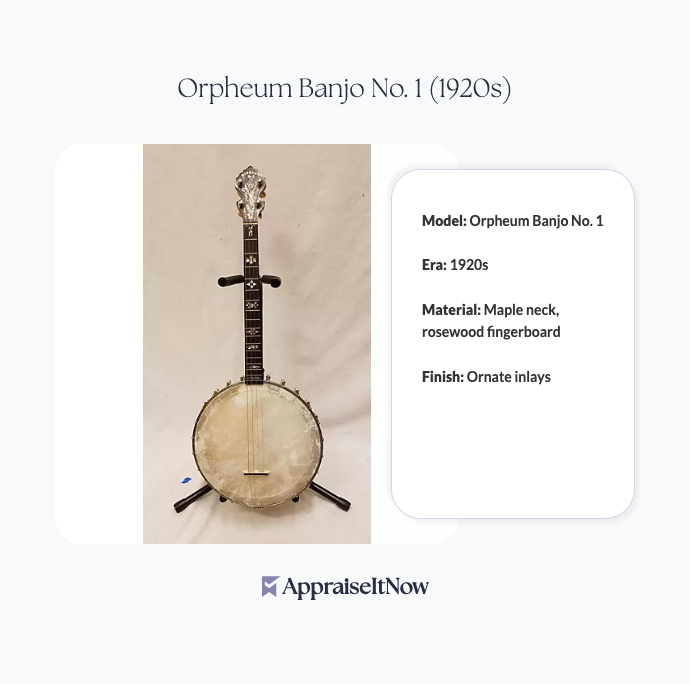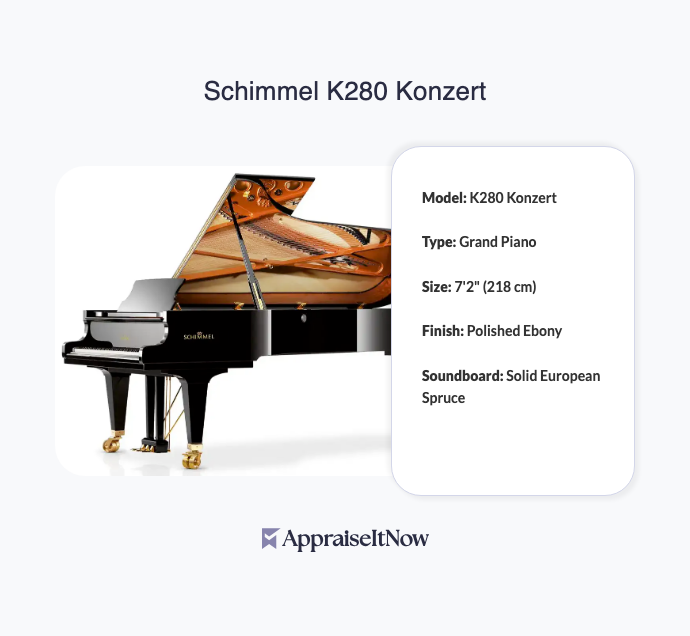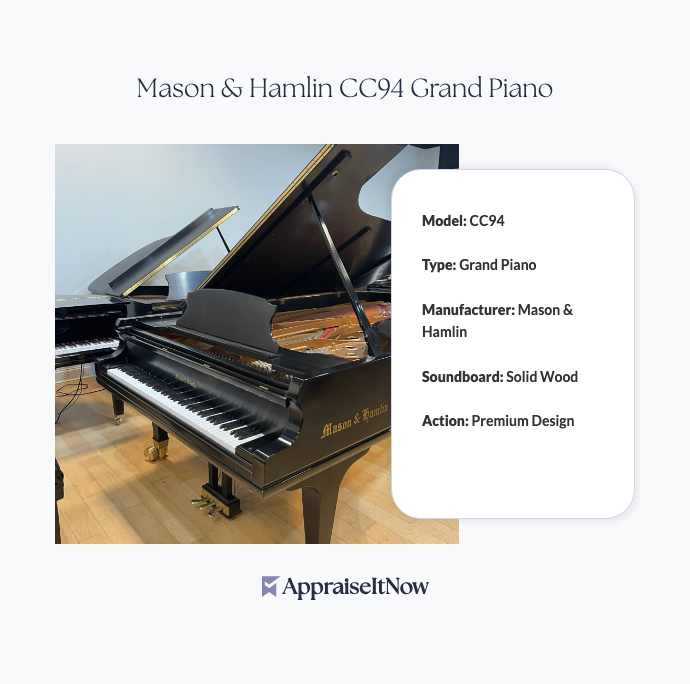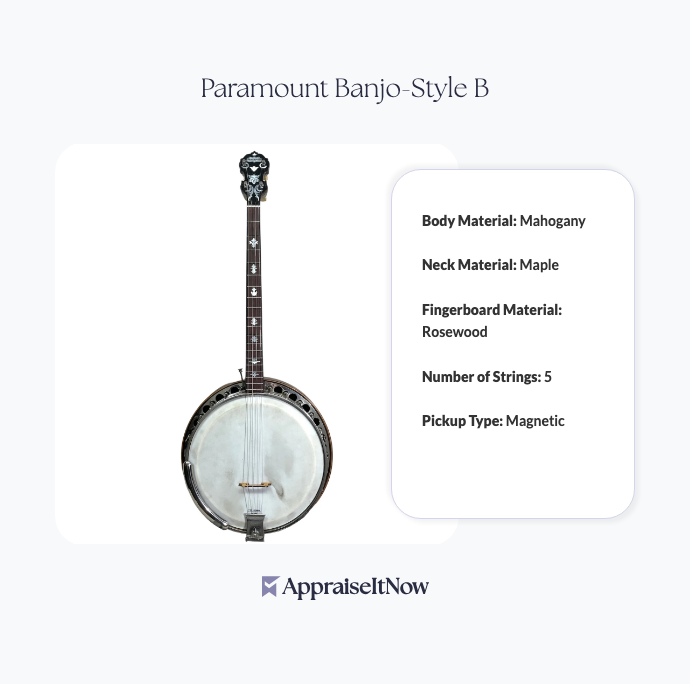<h1>How to Get Your Orpheum Banjo No. 1 (1920s) Appraised</h1>
<p>The <strong>Orpheum Banjo No. 1</strong> stands as one of the most celebrated vintage banjos among collectors and professional musicians alike. With market values ranging from <strong>$2,000 to $4,000</strong>, understanding the appraisal process ensures you capture the instrument's true worth—whether you're evaluating an inherited piece, planning a sale, or protecting your investment through insurance documentation.</p>
<h2>Understanding the Orpheum Banjo No. 1's Market Position</h2>
<p>First introduced in 1920, the Orpheum Banjo No. 1 represents the pinnacle of early 20th-century banjo craftsmanship. Its distinctive resonator design, maple neck with rosewood fingerboard, and ornate inlays have made it highly sought after by both professional musicians and serious collectors. The combination of meticulous attention to detail and the instrument's rich, vibrant tone positioned it as a benchmark for quality during the jazz age—a distinction that directly influences its current market value.</p>
<p>The 1920s banjo market was experiencing significant innovation, and the Orpheum Banjo No. 1 captures this pivotal moment in musical history. As a result, original examples in good condition command premium prices in today's collectibles market, making professional appraisal essential for accurate valuation.</p>
<div class="callout tip"><p><strong>Collector's Insight</strong></p>
<p>Original examples with intact hardware, clear maker marks, and documented provenance can command prices at the upper end of the $2,000–$4,000 range or potentially higher.</p></div>
<h2>Key Factors That Determine Your Orpheum Banjo's Value</h2>
<p>When seeking an appraisal for your Orpheum Banjo No. 1, several critical elements directly influence its appraised value. Understanding these factors helps you prepare documentation and communicate effectively with professional appraisers specializing in <a href="/types/memorabilia-and-collectibles">memorabilia and collectibles</a>.</p>
<p><strong>Maker marks and model verification</strong> form the foundation of authenticity assessment. Your banjo's original label, serial number, and construction stamps identify it as a genuine 1920s Orpheum product rather than a later reproduction. Appraisers examine these markings carefully, as counterfeits and misattributed instruments occasionally appear in the market, directly affecting pricing decisions.</p>
<p><strong>Condition of critical components</strong> significantly impacts valuation. The neck's structural integrity, rim condition, head (drumhead) quality, and original hardware all contribute to your banjo's assessment. Unlike some <a href="/types/antique-furniture">antique furniture</a> where refinishing is sometimes acceptable, vintage banjos retain higher value when original finishes, original gut or nylon strings, and period-appropriate hardware remain intact. A banjo with a hairline neck crack or replaced tuning pegs will appraise substantially lower than one with all original components.</p>
<p><strong>Documentation and provenance</strong> provide powerful value enhancement. If you possess original sales receipts, previous owner information, exhibition records, or photographs showing the banjo's history, compile these materials for your appraiser. Instruments with clear ownership chains and documented performance histories command premiums—sometimes 15–25% higher—than those lacking background documentation.</p>
<h2>The Role of Condition Assessment in Banjo Appraisal</h2>
<p>Professional appraisers evaluate your Orpheum Banjo No. 1 using standardized condition grading that parallels approaches used for <a href="/types/antique-artwork">antique artwork</a> and other vintage instruments. The assessment addresses both aesthetic and functional factors.</p>
<p>The neck requires particular scrutiny. Twisting, bowing, or cracks dramatically reduce value, as restoration costs are substantial and imperfect repairs affect both playability and aesthetics. Similarly, the wooden rim's integrity matters greatly—checking, warping, or water damage necessitates expensive restoration that potential buyers account for in their offers.</p>
<p>Drumhead condition presents a common consideration. Original calfskin heads from the 1920s may show age-appropriate wear; replacement heads are expected maintenance and typically don't negatively impact value. However, if your banjo shows evidence of aggressive head replacement efforts or internal damage, appraisers will note these issues in their valuation.</p>
<p>Hardware originality carries substantial weight. Original Orpheum tuning pegs, tension hoops, and hardware fixtures are far preferable to replacements. Even cosmetic modifications—polish marks, minor corrosion, or replacement screws—can reduce value incrementally, though they rarely devastate appraisals of quality instruments.</p>
<div class="callout note"><p><strong>Appraisal Reality</strong></p>
<p>A well-maintained 1920s Orpheum Banjo No. 1 with original components typically appraises near or above the $3,000–$4,000 range, while instruments requiring significant restoration may fall toward the $2,000–$2,500 range.</p></div>
<h2>When In-Person Inspection Becomes Necessary</h2>
<p>While AppraiseItNow specializes in efficient, photo-based online appraisals for many collectibles, certain scenarios with vintage banjos warrant in-person evaluation. Understanding when professional inspection matters helps you determine the appropriate appraisal method.</p>
<p>For high-value examples exceeding $4,000 or instruments with questionable provenance, an appraiser's hands-on examination provides irreplaceable assessment. In-person inspections allow specialists to detect subtle repairs, assess structural integrity through careful manipulation, and verify maker marks with specialized knowledge that photographs can't always capture. If you're pursuing insurance coverage for replacement value or documentation for estate purposes, insurance companies and legal proceedings often require detailed in-person appraisals from credentialed experts.</p>
<p>Conversely, well-documented Orpheum Banjo No. 1s in obviously good condition with clear photographs from multiple angles often qualify for reliable photo-based appraisals. The key distinction involves the instrument's condition clarity and the stakes of valuation accuracy for your specific purpose.</p>
<h2>Professional Credentials and Appraiser Selection</h2>
<p>The credibility of your appraisal depends significantly on the appraiser's qualifications. When evaluating who should assess your Orpheum Banjo No. 1, look for credentials from recognized organizations. The <strong>International Society of Appraisers (ISA)</strong>, <strong>American Society of Appraisers (ASA)</strong>, <strong>Appraisers Association of America (AAA)</strong>, and <strong>American Musical Instrument Society (AMIS)</strong> maintain rigorous standards for member appraisers.</p>
<p>Specialists holding <strong>USPAP (Uniform Standards of Professional Appraisal Practice)</strong> certification provide valuations accepted by insurance companies, courts, and financial institutions. When you engage AppraiseItNow, you're connected with credentialed experts who understand vintage musical instrument valuation, <a href="/blog/unraveling-the-mysteries-of-antique-appraisals-a-guide-for-collectors">antique appraisal standards</a>, and documentation requirements specific to 1920s banjos.</p>
<div class="callout tip"><p><strong>Credential Check</strong></p>
<p>Always verify an appraiser's credentials through the issuing organization's website before committing to an appraisal engagement.</p></div>
<h2>Understanding Different Appraisal Values</h2>
<p>The term "appraisal value" encompasses several distinct definitions, each serving different purposes. Clarifying which type you need prevents misalignment with documentation and potential disputes.</p>
<p><strong>Fair market value</strong> represents the price your Orpheum Banjo No. 1 would likely sell for between informed buyers and sellers with reasonable time to transact. This is typically the figure used for tax purposes, estate settlements, and general reference. For your 1920s Orpheum, fair market value likely aligns with the $2,000–$4,000 range.</p>
<p><strong>Insurance replacement cost</strong> reflects what you'd need to spend to acquire a comparable banjo if yours were damaged or lost. This often exceeds fair market value, as the appraiser considers current market demand, scarcity, and acquisition difficulty. For high-quality 1920s banjos, replacement cost might be 10–20% higher than fair market value due to fewer instruments available for sale.</p>
<p><strong>Liquidation value</strong> applies when urgent sale is necessary, typically yielding 60–75% of fair market value. This scenario assumes quick sale through dealers or wholesalers rather than ideal private sale conditions.</p>
<p>Understanding these distinctions ensures your appraisal serves your actual need—whether securing insurance protection, documenting estate value, or planning a strategic sale. Professional appraisers specify which type of value their report provides, preventing later confusion.</p>
<h2>Recent Market Data and Comparable Sales</h2>
<p>The 1920s banjo market has shown steady appreciation over the past decade, driven by increased collector interest in vintage instruments and limited supply of quality examples. Recent auction results for comparable Orpheum banjos and other 1920s instruments provide context for current valuations.</p>
<p>Auction house records from Sotheby's, Christie's, and specialized music collectibles platforms show well-documented 1920s banjos consistently achieving prices in the $2,500–$4,500 range. Private sales often exceed public auction prices by 10–15%, as buyers willing to negotiate outside auction pressure sometimes achieve higher acquisition costs. Your appraiser, when conducting a professional valuation, examines these comparable sales to establish market-based values rather than relying on estimates or dealer quotes.</p>
<p>The question of recent pricing extends to regional variations. Banjos appraised in music-centric regions with active collector communities—Nashville, New Orleans, New York—sometimes command premiums over rural markets. A professional appraiser familiar with both national and regional markets adjusts valuations accordingly.</p>
<div class="callout note"><p><strong>Market Transparency</strong></p>
<p>Reputable appraisers document comparable sales within their reports, showing you exactly how they derived their valuation conclusions.</p></div>
<h2>Documentation That Supports Higher Appraisal Values</h2>
<p>As you prepare for your Orpheum Banjo No. 1 appraisal, gathering supporting documentation strengthens both the appraisal's credibility and your instrument's value narrative. Original sales receipts, manufacturer documentation, historical performance records, or photographs showing the banjo's ownership chain all contribute meaningfully to valuation.</p>
<p>If your banjo was owned by a known musician, performed in recorded sessions, or appeared in published photographs, this historical significance can add substantial value. Documentation proving these connections provides appraisers with context that elevates your instrument beyond a generic 1920s example.</p>
<p>Previous appraisals, even if dated, provide historical benchmarking. Showing an appraiser a prior valuation allows them to assess how market conditions have shifted and adjust valuations accordingly. Similarly, maintenance records demonstrating professional care and restoration work by respected luthiers add credibility to your instrument's condition representation.</p>
<h2>Planning Your Appraisal Timeline and Costs</h2>
<p>Understanding typical appraisal fees and timeframes helps you plan your engagement with professional services effectively. Photo-based appraisals through platforms like AppraiseItNow typically range from <strong>$250 to $500</strong> for straightforward valuations, completed within 3–7 business days. These streamlined assessments work well for clearly documented instruments with obvious condition status.</p>
<p>In-person appraisals by local or traveling specialists typically cost <strong>$500 to $2,000</strong>, depending on travel requirements, complexity, and the appraiser's experience level. High-value instruments or those requiring extensive research and documentation might incur fees approaching <strong>$3,000</strong>, particularly when the appraisal requires detailed comparative market analysis or specialized authentication work.</p>
<p>Regardless of your chosen approach, the cost of professional appraisal represents valuable insurance against undervaluation. An appraiser who identifies overlooked condition issues, documents hidden provenance, or corrects previous misidentifications can easily justify the service fee through enhanced accuracy and credibility.</p>
<div class="callout tip"><p><strong>Fee Comparison</strong></p>
<p>Compare appraiser quotes based on credentials and scope of work rather than price alone—the most inexpensive option may not provide the documentation rigor your situation requires.</p></div>
<h2>Impact of Restorations and Non-Original Components</h2>
<p>One of the most common valuation questions concerns how repairs, restorations, and non-original replacements affect your Orpheum Banjo No. 1's market value and appraisal outcome.</p>
<p>Generally, invisible or historically appropriate restorations by respected luthiers have minimal negative impact on value. A professionally re-fretted fingerboard or structurally sound neck reset, when necessary for playability, doesn't substantially diminish appraisal value if the work is expertly executed and documented.</p>
<p>Conversely, aggressive modifications, amateur repairs, or cosmetic changes dramatically reduce value. Refinishing original wood surfaces, replacing the rim with a non-original component, or modifying the instrument's original design specifications signals to appraisers and buyers that the banjo has lost authenticity—a critical factor for 1920s instruments. These modifications can reduce value by 20–40% or more, depending on severity.</p>
<p>The distinction between necessary restoration and inappropriate modification matters greatly in appraisal decisions. Professional appraisers, particularly those familiar with <a href="/blog/appraising-musical-instruments-determining-the-worth-of-melodic-investments">vintage musical instrument appraisal</a>, understand which repairs preserve value versus those that compromise it.</p>
<h2>Selling Your Appraised Orpheum Banjo No. 1</h2>
<p>Once you've obtained a professional appraisal, you may decide to sell your banjo. Different sales channels achieve different results, and understanding these options helps you position your appraised value appropriately.</p>
<p><strong>Auction houses</strong> specializing in musical instruments or general antiques provide broad market exposure but typically charge 15–25% commissions. Reputable auction venues attract serious collectors and often achieve strong prices for documented vintage banjos. The appraisal value provides an excellent starting estimate for reserve pricing.</p>
<p><strong>Specialized dealers</strong> in vintage instruments understand banjo markets intimately and may offer fair prices without commission overhead. However, dealer pricing typically falls below retail value, as they're acquiring inventory for resale. A dealer might offer 60–70% of appraised fair market value.</p>
<p><strong>Private sale</strong> through musician communities, online platforms like Reverb, or local collectors often achieves prices nearest to appraised fair market value. Direct sales require more effort but eliminate intermediary commissions, maximizing your net proceeds. Your professional appraisal provides credible documentation that builds buyer confidence in private transactions.</p>
<p>Consider consulting our guide on <a href="/blog/how-to-choose-the-right-professional-for-your-furniture-appraisal">choosing the right professional for your appraisal</a> to ensure your appraiser understands the selling channels you anticipate, allowing them to advise on value preservation strategies throughout the sales process.</p>
<h2>Insurance Coverage and Ongoing Valuation</h2>
<p>Professional appraisals serve a critical purpose beyond buying or selling—they enable proper insurance coverage for valuable instruments. If your Orpheum Banjo No. 1 is worth $2,500 or more, standard homeowner's insurance likely provides inadequate coverage. A USPAP-compliant appraisal from a credentialed specialist allows you to schedule your banjo on an insurance rider, ensuring full replacement value protection.</p>
<p>Insurance companies typically require updated appraisals every 3–5 years, as market values fluctuate. The 1920s banjo market has appreciated steadily, meaning your instrument may be worth substantially more today than it was five years ago. Regular reappraisals protect you from underinsurance and document the instrument's appreciation for net worth tracking and estate planning purposes.</p>
<p>For detailed guidance on insurance documentation for collectibles, explore how <a href="/blog/the-importance-of-appraisals-for-insurance">professional appraisals support insurance coverage</a> to ensure your valuable Orpheum Banjo No. 1 receives the protection it deserves.</p>
<div class="callout note"><p><strong>Key Takeaway</strong></p>
<p>A certified appraisal of your Orpheum Banjo No. 1 provides essential documentation for accurate valuation, insurance protection, and confident transactions. Whether you're buying, selling, or preserving this 1920s masterpiece, professional appraisal ensures you understand both the historical significance and monetary value of your instrument, while providing documentation that stands up to professional and legal standards.</p></div>







.avif)







